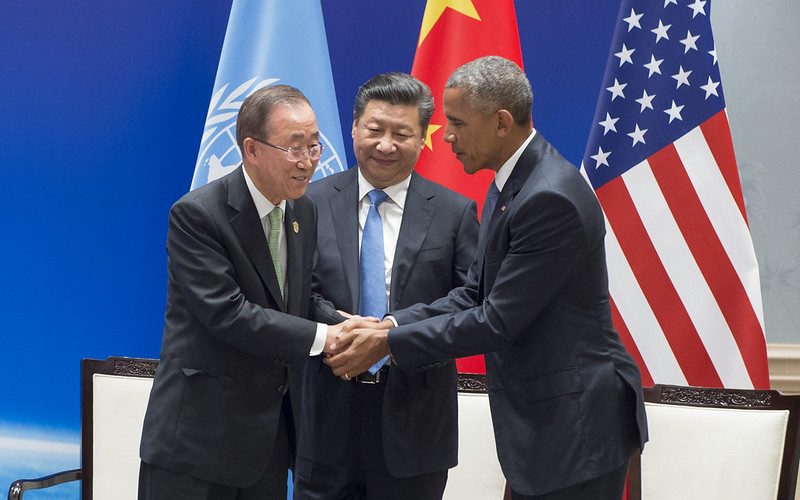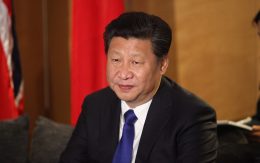Since the beginning of COVID-19, anti-Chinese sentiments have proliferated globally, often fueled by misinformation disseminated and encouraged across multitudes of media platforms. While Sinophobia transcends across countries, one, in particular, stands out: The United States. In 2023 alone, several hate crimes have been reported. Most notably the Lunar New Year shooting and the stabbing of a University Student inside a bus.
Sinophobia in the US can be traced back to the Yellow Peril orientalist myth. The false notion of East and Southeast Asians as a racial group which threatens the existence of Western countries by outnumbering the ‘Whites’. It promotes the idea that the Eastern World and Western World are drastically different, with people from the former often portrayed as ‘primitive savages’. The Yellow Peril myth gained prominence when Chinese immigrants arrived in the US to work for menial wages as miners, often scapegoated for ‘stealing jobs’. Anti-Chinese sentiments worsened during the Cold War when the People’s Republic of China (PRC) emerged as a Communist state. While the country’s previously dormant image palliated Sinophobia, China is now a central topic amongst Americans today and receives increasing negative coverage as the country earns prominence across the globe – and this is not coincidental.
News media agencies, social media, and even politicians are responsible for encouraging blatant anti-China rhetoric. They often exaggerate any news originating from China or falsify the information into anything sinister. The propaganda aims to discredit the Communist country, but its unintended consequence threatens the safety, and lives, of Asian Americans by precipitating anti-Chinese bigotry amongst the people. While the political values of China and the US are conflicting, the conflation of CPC with ordinary Chinese citizens or ancestry is a dangerous precedent augmenting targeted hate crimes. By normalizing this rhetoric of lies and exaggerations, we are enabling harm against innocent people by associating them with a country’s government.
Today, anything remotely associated with China is instinctively vilified. The success of this agenda-setting campaign against China can be delineated from the ludicrous story of a Chinese spy balloon ostensibly dispatched to spy on Americans which made headlines for weeks, further villainizing the Chinese people. This fearmongering is deliberately weaponized by American state actors in order to defame China in the eyes of the public as the latter rises as a competent global hegemon and a challenger to America’s position as the sole superpower.
Nevertheless, the Sinophobic hysteria lies in hypocrisy. China is censured for actions also perpetrated by the US. Most notably, the accusations of installing spy malware in Huawei electronics, which ultimately prompted its embargo and eventual arrest of its CFO in Canada, is hypocritical when the fingers are pointed by Americans whose National Security Agency was revealed to have surveillance abilities over its citizens by whistleblower Edward Snowden.
The weaponization of Sinophobic sentiments is adopted by the American government, which is a common strategy utilized to undermine another country. Regardless, the dehumanization of an entire racial population prompts misinformation, bigotry, and hate crimes. Society should not condone them, and human rights should not be impeded in the struggles of power politics. No ordinary individual is deserving of being accountable for actions beyond their control. Sinophobia is a real threat in Western society today, and the government must act upon it as such.
Submit here
Sources Associated Press (2023) University: Student stabbed on bus because she is Asian [online] available from <https://apnews.com/article/crime-indiana-bloomington-a8fcd4c2a24a844522ec2b7aae0098f5> Feiner, L. (2021) ‘Huawei CFO Meng Wanzhou to be released after agreement with U.S. in wire fraud case’, CNBC [online] available from <https://www.cnbc.com/2021/09/24/huawei-cfo-meng-wanzhou-to-be-released-after-agreement-with-us-in-fraud-case.html> Ghee, L. T. (2022) ‘Revival of the Yellow Peril Myth’, The Sun Daily [online] available from <https://www.thesundaily.my/opinion/revival-of-the-yellow-peril-myth-LY9661814> Greenwald, G., MacAskill, E. & Poitras, L. (2013) ‘Edward Snowden: the whistleblower behind the NSA surveillance revelations’, The Guardian [online] available from <https://www.theguardian.com/world/2013/jun/09/edward-snowden-nsa-whistleblower-surveillance> Lane, S., Fecteau, M., Quran, L. & Nawaz, A. (2023) ‘Community seeks answers after deadly Lunar Year shooting in California’, PBS [online] available from <https://www.pbs.org/newshour/show/community-seeks-answers-after-deadly-lunar-new-year-shooting-in-california> Yilek, C. (2023) ‘What we know so far about the Chinese spy balloon and the other objects the U.S. shot down’, CBS News [online] available from <https://www.cbsnews.com/live-updates/chinas-spy-balloon-unidentified-objects-shot-down-what-we-know-so-far/>








Be First to Comment